What's New
Displaying results 1551 - 1560 of 4913
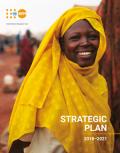
Resource | Guidelines,
This interactive edition of the UNFPA Strategic Plan 2018-2021 shows the overall goal of UNFPA, the three transformative results, alignment with Agenda 2030, the four core areas of engagement, how we work, and budget.
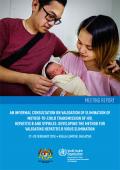
Resource | Publications,
The consultation was convened in Malaysia (Putrajaya, 27 to 28 February 2018) by the Malaysian Ministry of Health and WHO to discuss potential approaches for validation of mother-to-child transmission of hepatitis B inviting national and international experts.
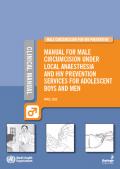
Resource | Tools,
Safety and people-centred health services are top priority as male circumcision is implemented to reduce the risk of HIV among men in high burden countries. WHO and Jhpiego are launching the 2018 Manual for Male Circumcision under local anesthesia and other HIV prevention services for adolescent boys and men to support the ongoing delivery of high quality services. Since the 2007 WHO and UNAIDS recommendation to add male circumcision as an intervention in a package of services to reduce men’s risk of heterosexually acquiring HIV, extensive practical experience has been gained and lessons learned.

Resource | Fact Sheets,
In April 2018, there were 924 new HIV antibody seropositive individuals reported to the HIV/AIDS and ART Registry of the Philippines (HARP). Nineteen percent (179) had clinical manifestations of advanced HIV infection (WHO clinical stage 3 or 4) at the time of diagnosis.
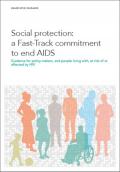
Resource | Guidelines,
Although much has been written on HIV-sensitive social protection, there is insufficient guidance on how to bring to scale what works in the context of different HIV epidemics and for different populations. This document seeks to fill this gap. It provides guidance to governments, people living with, at risk of or affected by HIV, policy-makers, and other stakeholders on how to intensify the integration of HIV with social protection and other programmes for ending poverty and inequality towards ending AIDS. It summarizes relevant evidence on social protection, including cash transfers, and on how social protection contributes to the AIDS response. It presents a brief account of the status of progress of Member States in meeting the HIV and social protection target of the 2016 Political Declaration on AIDS. It provides guidance for leveraging and scaling up social protection—in particular, social safety nets, financial incentives and social services—towards achieving the goal of ending AIDS. It does not focus on social security and labour market polices.

Resource | Publications,
Following the government’s ongoing ‘war on drugs’, law enforcement operations increased, leading to a rapid rise in the numbers of people held in detention and prison facilities. This, in turn, worsened already poor prison conditions in the Philippines. Official government data revealed a 511% congestion rate in Philippine jails and current trends show a surge in jail population attributable to ‘the increase in the number of drug-related cases’.

Resource | Publications,
Speaking on the UN International Day against Drug Abuse and Illicit Trafficking on June 26 in 2016, Cambodia’s Prime Minister Hun Sen emphasised the role of local communities and authorities in responding to drug-related issues, and strongly encouraged the promotion and strengthening of quality community-based treatment and rehabilitation services. His apparent support for a shift towards drug dependence treatment services that do not involve coercion and detention seemed to align with the government’s approval of Cambodia’s first five-year National Strategic Plan for Harm Reduction 2016-2020 (NSPHR) in 2016.
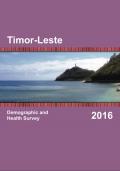
Resource | Publications,
The primary objective of the 2016 Timor-Leste: Demographic and Health Survey (TLHDS) project is to provide up-to-date estimates of basic demographic and health indicators. The TLDHS provides a comprehensive overview of population, maternal, and child health issues in Timor-Leste.
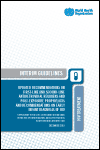
Resource | Guidelines,
In 2016, WHO published updated consolidated guidelines on the use of antiretroviral (ARV) drugs for treating and preventing HIV infection. These guidelines included recommendations on the choice of ARV drugs for first- and second-line antiretroviral therapy (ART). An efavirenz (EFV 600 mg)-based regimen was recommended as the preferred first-line regimen, with a dolutegravir (DTG)- or efavirenz (400 mg)-based regimen recommended as alternative options because of limited efficacy and safety data in pregnancy and when taken concomitantly with tuberculosis (TB) treatment. ART recommendations for children remained unchanged in 2016 compared with 2013 because of lack of approved DTG dosing for use in children.
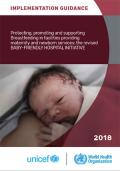
Resource | Guidelines,
This updated implementation guidance is intended for all those who set policy for, or offer care to, pregnant women, families and infants: governments; national managers of maternal and child health programmes in general, and of breastfeeding- and Baby-friendly Hospital Initiative (BFHI)-related programmes in particular; and health-facility managers at different levels (facility directors, medical directors, chiefs of maternity and neonatal wards). The document presents the first revision of the Ten Steps since 1989. The topic of each step is unchanged, but the wording of each one has been updated in line with the evidence-based guidelines and global public health policy.





